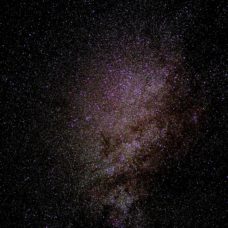The two closest planets to Earth. Mars and Venus. The first is a barren, frozen land, while the other is a blazing world.
As far as terraforming is concerned, Mars seems like a more straightforward bet than Venus because warming a planet is much less challenging than cooling it.
After all, that’s what humans have proved themselves to be excellent at here on Earth, causing global warming!
But Venus has a few things going for it that make it seem like a better candidate for space colonization.
Venus, Earth’s Infernal Sister
After the Sun and the Moon, Venus is the third brightest cosmic object in our night sky, and it is the closest-ever planet to Earth.
Often called Earth’s sister, or twin planet, Venus has a similar mass, size, and density to our planet, and with an atmosphere for good measure. Yet, it doesn’t get much press, if at all, certainly not as much as Mars!
Astrophysicists think that billions of years ago, Venus had large amounts of water in the form of vapor because it’s so close to the Sun.
Water vapor, the most abundant greenhouse gas on Earth, traps the radiation from the Sun in the atmosphere, raising the temperature.
But Venus’ thick atmosphere also contains carbon, 97% nitrogen, and other greenhouse gases that together cause the planet to be the hottest in the Solar System. It’s even hotter than Mercury, which is closer to the Sun.
The surface temperatures of Venus reach 880 degrees F (471°C), and it doesn’t fluctuate that much between day and night or over the years.
Mounting evidence suggests that Venus was once a habitable world, maybe even inhabited, and wasn’t always this hellscape it is today.
Technically, Venus is still habitable in the sense that humans can go there and establish a “suspended” colony, at least in theory.
Space Colonization: Venus Gives Mars a Run for its Money
For starters, Venus is closer to Earth than Mars. That’s why the first-ever space probes were sent there long before to Mars. A round-trip to Venus using current rocket technology would take 30-50% less time compared to Mars, which means fewer travel logistics and lesser costs.
But, these are not the only things that would make Venus a suitable candidate for space colonization. There’s also gravity.
Mars’ gravity is about 0.4 times that of Earth, and scientists aren’t sure how harmful long-term exposure to Martian gravity would be for human colonizers. Prolonged exposure to low gravity was shown to cause bone mass loss and disrupt bodily fluids movement acting on the brain.
People talk of terraforming Mars without addressing the Martian gravity problem. Sure, solutions exist in the form of domed colonies, but how scalable that would be?
On Venus, gravity is less of a concern because it’s around 0.9 Earth g’s.
Then, there’s Venus’ atmosphere.
Mars has a very thin layer of gas serving as an atmosphere, about 0.6% that of Earth, which can’t retain heat and causes the average surface temperature of the planet to drop to -81° F.
Elon Musk has proposed to drop nuclear bombs over Mars to melt the polar ice into water and to release carbon dioxide to warm up the planet. If only nuking Mars was feasible.
It isn’t a good idea, like many other nuking-stuff ideas!
Venus has a much thicker atmosphere than Earth’s, consisting mainly of carbon dioxide and clouds of sulfuric acid. Meaning, it can shield the planet against the Sun’s radiation and meteorites. Oxygen can theoretically be extracted from the carbon in Venus’ atmosphere.
Satisfying energy needs on Venus also wouldn’t be a problem. Closer to the Sun, Venus receives about 240 times more solar power than Mars and 40 times more than Earth.
Here, we come to arguably the biggest obstacle to any potential space colonization plan of Venus: the extremely high temperature and pressure on the Venusian surface.
Let’s Unleash ‘HAVOC’ on Venus!
Venus’ surface temperature is exceptionally high, nearing 500°C, high enough to melt lead. That and the barometric pressure (at 93 bar), roughly the same pressure found 3,000 ft underwater on Earth, makes it vain to think of any ground settlements.
But, there might be a solution high above the surface of Venus.
At 50 km of altitude, pressure drops to about 1 bar, so you don’t even need a spacesuit. Plus, the temperature drops to around 70°C, still very hot but manageable. A little higher, at 55 km, the temperature would drop to 20-30°C.
NASA scientists thought of a “cloud city” concept to colonize Venus, called HAVOC, short for High Altitude Venus Operational Concept.
Designed to support an exploration crewed mission to Venus’s atmosphere for up to 30 days, HAVOC is a 129-meter airship, covered with solar panels, that would stay afloat, up in the Venusian atmosphere.
This cloud city “could carry either a host of instruments and probes or a habitat and ascent vehicle for a crew of two astronauts. Such a mission would require less time to complete than a crewed Mars mission.”



















Comments (0)
Most Recent